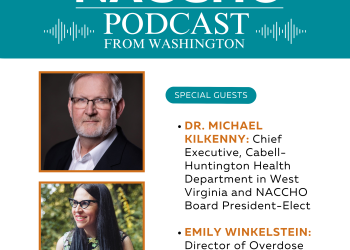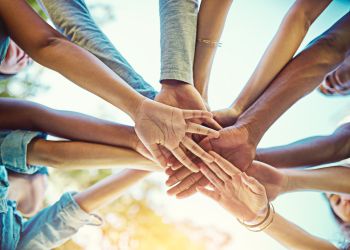According to the Centers for Disease Control and Prevention (CDC), one in four adults in the United States has a disability. Disability is defined as any condition of the body or mind that makes it more difficult for the person to perform certain activities and interact with the world around them.
COVID-19 highlighted the importance of collaboration between Centers for Independent Living (CILs) and state and local health departments (SLHDs) in delivering seamless resources and support to people with disabilities, especially during times of emergency. Centers for Independent Living are consumer-controlled, community-based, cross-disability, nonresidential, private nonprofit agencies that are designed and operated by persons with disabilities. CILs provide persons with disabilities tools and resources to make decisions about their lives and participate fully in society.
Service provided by CILs include peer counseling; individual and systems advocacy; and
services that facilitate transition from nursing homes and other institutions to the community, provide assistance to those at risk of entering institutions, and facilitate transition of youth to postsecondary life. Centers also may provide psychological counseling; assistance in securing housing or shelter; personal assistance services; transportation referral and assistance; physical therapy; mobility training; rehabilitation technology; recreation; and other services necessary to improve the ability of individuals with significant disabilities to function independently in the family or community and/or to continue in employment.
Because CILs and SLHDs, including tribal and territorial health departments, support the health of people with disabilities living in their jurisdictions in different ways, reciprocal partnerships offer an effective and efficient way to ensure that people with disabilities can obtain adequate, effective, timely, accessible, and culturally appropriate services and support.
NACCHO partnered with the CDC Foundation to increase COVID-19 vaccination access among people with disabilities and initiated conversations with SLHDs and CILs. These working sessions resulted in action plans outlining how health departments and CILs can better work together, with an emphasis on COVID-19 education and vaccine access among people with disabilities.
There are numerous ways that partnership can benefit both CILs and SLHDs. Examples include:
- SLHDs can share information about public health practices of which CILs may not be aware. In turn, CILs can educate SLHDs about the health and accessibility needs of people in their jurisdiction, which can lead to more inclusive and accessible services.
- CILs can provide architectural and website accessibility consulting/advising (e.g., help SLHDs make their communications materials, physical office spaces or events more accessible).
- CILs can gather input from people with disabilities for needs assessments, message testing, programming or other SLHD services and efforts.
- CILs can provide input on SLHD programming and policies to ensure the inclusion of people with disabilities (e.g., provide feedback on a SLHD’s emergency response plan, ensure that emergency shelters are accessible, provide contact lists for CILs, coordinate to ensure equipment is provided to people with disabilities during an emergency).
- CILs can join existing advisory committees or form advisory committees to support health departments (e.g., an advisory committee focused on people with disabilities or on any of the subject areas that SLHDs focus on which involve people with disabilities).
Additional Resources to Collaborate with CILs to Improve Vaccination Uptake for People with Disabilities
- Partnership Guide for Centers for Independent Living and State and Local Health Departments
- Success Stories from Trumbell County and Alameda County on How They Collaborated with Centers for Independent Living in Their Community
- Partner Planning Resources to Facilitate Relationship Building and Engagement Between SLHDs and CILs



